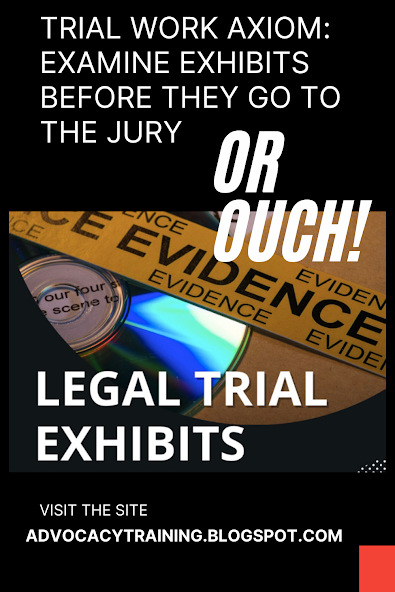I'm currently working on a new book on Lawyer Humor and this is a piece of it.
Law schools should focus on producing professional communicators—lawyers—who are effective writers. However, Bryan A. Garner in his column for the ABA Journal titled, “Why Lawyers Can’t Write” with the subtitle: “Science has something to do with it, and law schools are partly to blame.” stated:
While lawyers are the most highly paid rhetoricians in the world, we’re among the most inept wielders of words. Stop and think about that. The blame goes primarily to law schools. They inundate students with poorly written, legalese-riddled opinions that read like over-the-top Marx Brothers parodies of stiffness and hyperformality. And they offer law students little if any feedback (on substance, much less style) from professors on exams and writing assignments. (ABA Journal, March 2013, p. 24)
Garner was echoing the theme of Jim McElhaney, advocacy instructor and ABA Journal contributor for 25 years, who wrote this in a September 2012 ABA Journal article:
Law school is as much obscure vocabulary training as it is legal reasoning. At its best, it can teach close thought and precise expression. But too often law school is reverse Hogwarts – where Harry Potter trained to be a wizard – that secretly implants into its students the power to confuse other people instead of sowing the magic seeds of clarity and simplicity.
So we lard our speech and writing with words and phrases of awkward obscurity and rarely have anything to do with legal precision but that unmistakably say, ‘This was written – or said – by a lawyer.’
Because we are professional communicators, it is our obligation to be plain and simple. It’s not our readers’ and listeners’ jobs to try to understand us. It’s our job to make certain that everything we write and say commands instant comprehension.
And because we weren’t turned out that way by our law school training, we have to reprogram ourselves if we want to be effective communicators.
One day in contract law class, the professor asked one of his better students, "Now if you were to give someone an orange, how would you go about it?"
The student replied, "I’d write a contract that says, ‘Here's an orange.’"
The professor was livid. "No! No! Think like a lawyer!"
The student then responded, "Okay, I'd write, ‘I hereby give and convey to you all and singular, my estate and interests, rights, claim, title, claim and advantages of and in, said orange, together with all its rind, juice, pulp, and seeds, and all rights and advantages with full power to bite, cut, freeze and otherwise eat, the same, or give the same away with and without the pulp, juice, rind and seeds, anything herein before or hereinafter or in any deed, or deeds, instruments of whatever nature or kind whatsoever to the contrary in anywise notwithstanding...’"
Here is another example—in a pretrial ruling on a motion for a more definite statement in a complaint, the Honorable Ronald B. Leighton, United States District Judge, Western District of Washington at Tacoma, Washington provided gems of judicial humor when discussing a pleading. In Presidio Group, LLC, vs. GMAC Mortgage, LLC. Judge Leighton's order granting the motion began with William Shakespeare, Hamlet, Act 2, Scene 2, Line 90: “Brevity is the soul of wit.”
The good Judge then went on to point out that “(b)revity is also the soul of a pleading. See Fed. R. Civ. P. 8(a). The Federal Rules envision a “short and plain statement of the claim showing that the pleader is entitled to relief.” He then described portions of the 465-page Complaint:
Not before page 30 does the Complaint address the facts alleged. Plaintiff’s allegations continue for 87 pages – including a 37-page pit-stop to quote e-mails. (Compl. 39-76). The Court notes, with some irony, that in his response opposing Defendants’ motions for a more definite statement, the Plaintiff successfully states his allegations in two pages.
Then, in granting the motion, Judge Leighton added a bit of his own poetry:
Plaintiff has a great deal to say
But it seems he skipped Rule 8(a),
His Complaint is too long,
Which renders it wrong,
Please re-write and re-file today.
______________________________
To assist lawyers, Sally Bulford, a Utah prosecutor, provided these witty writing pointers for lawyers under the title “How to Write Good”:
1. Avoid alliteration. Always.
2. Prepositions are not words to end sentences with.
3. Avoid cliches like the plague. (They're old hat.)
4. Employ the vernacular.
5. Eschew ampersands & abbreviations, etc.
6. Parenthetical remarks (however relevant) are unnecessary.
7. It is wrong to ever split an infinitive.
8. Contractions aren't necessary.
9. Foreign words and phrases are not apropos.
10. One should never generalize.
11. Eliminate quotations. As Ralph Waldo Emerson said, "I hate quotations. Tell me what you know."
12. Comparisons are as bad as clichés.
13. Don't be redundant; don't use more words than necessary; it's highly superfluous.
14. Be more or less specific.
15. Understatement is always best.
16. One-word sentences? Eliminate.
17. Analogies in writing are like feathers on a snake.
18. The passive voice is to be avoided.
19. Go around the barn at high noon to avoid colloquialisms.
20. Even if a mixed metaphor sings, it should be derailed.
21. Who needs rhetorical questions?
22. Exaggeration is a billion times worse than understatement.
























